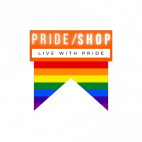Explore genders, identities and sexualities : a comprehensive guide Gender identity list
In today’s world, the diversity of genders, identities and sexualities is increasingly recognized and celebrated. However, for those unfamiliar with these concepts, it can be difficult to understand the differences and feel comfortable with these terms. That’s why we’ve created this guide to help you better understand genders, identities and sexualities.

Gender identity list
The genres
Gender refers to the roles, behaviors, activities and attributes that are considered appropriate for men and women in a given society. Traditionally, gender has been categorized into two binary categories: masculine and feminine. However, more and more people recognize themselves as being outside these binary categories. These people may identify as non-binary, genderfluid, or other gender identities.
identities
Identity refers to how a person perceives themselves. Identities can include sexual orientation, gender identity, ethnicity, religion and more. It is important to respect a person’s identity and not to make assumptions about their identity or preferences.
Sexualities
Sexuality refers to a person’s sexual and romantic preferences. People may identify as heterosexual, homosexual, bisexual, pansexual, or other sexuality identities. It is important to respect a person’s sexuality and not make assumptions about their preferences.
How to support people of diverse identities
It is important to create an inclusive environment for people of diverse identities. Here are some tips for supporting people of diverse identities:
- Respect the person’s pronoun. Ask the person which pronoun they prefer and use that pronoun.
- Avoid gender stereotypes. Avoid gender stereotypes such as judgments based on appearance or assumptions about preferences or interests.
- Listen and learn. If you are unfamiliar with gender identities and sexualities, take the time to learn and listen to people who identify this way.
- Respect the person’s choices. Respect the person’s choices regarding their identity and preferences.
Ultimately, it’s important to remember that each person is unique and has their own identity and preferences. By creating an inclusive environment and respecting the identities of others, we can create a more equitable and respectful world. We hope this guide has helped you better understand genders, identities and sexualities.
Agenre
Agender gender identity describes people who do not identify with any specific gender, considering themselves neutral or genderless. Although distinct, the terms agender and non-binary (also “neutres” or “genderqueer”) share the idea that these people exist outside of traditional definitions of gender.
Aromantically
Aromantic people do not feel romantic attraction to other individuals. Although some may find happiness in platonic or sexual relationships, others prefer singleness.
Asexual.the
Asexual people do not feel sexual desire towards other individuals. Some may feel love or enjoy physical intimacy, but have no interest in sexual contact.
Bisexual.the
Bisexual people are attracted to people of their own gender and people of a different gender. Although the term has long been used to describe an attraction to both men and women, it’s important to note that it’s based on the assumption that only two genders exist. More and more bisexual people identify as pansexual.
Cisgenre
Cisgender people identify with the gender corresponding to their biological sex. For example, a cis woman is someone with female genital characteristics who identifies as female. It’s called cisidentitis
Cisnormativity
Cisnormativity is the presumption that all individuals are cisgender, unless otherwise stated. It can make the experience of trans and non-binary people invisible .
Demiromantic, Demisexual.le
The prefix “demi” describes a person who is predominantly aromantic or asexual, but may experience romantic or sexual attraction in specific contexts.
gender fluid
Genderfluid people have a changing gender identity. They identify neither exclusively with the female gender nor with the male gender, their gender identity fluctuates.
Heteronormativity
Heteronormativity is a system of thought based on the presumption that heterosexuality is the norm. This belief feeds the illusion that there are fewer gender identities and sexual orientations. If cisgender and straight people could no longer see themselves as the norm, they would feel less threatened and less inconvenienced by new identities.
In our society, it is important to respect everyone’s choices and preferences, and this includes gender, identities and sexualities. It is important to remember that these concepts are complex and that there is no “right” or “wrong” way to define yourself. Ultimately, each person has the right to define themselves and to live their life authentically.
We hope this guide has helped you better understand genders, identities and sexualities. If you have any questions or want to learn more about these topics, feel free to talk to people who have experience in these areas or check out reliable online resources. By respecting the identities of others and creating an inclusive environment, we can all contribute to a more just and equitable world for all.
Other links :
- Intersex definition : everything you need to know
- Aromantic meaning
- Agenre meaning
- demisexual meaning
- demiboy meaning
- demigirl meaning
DISCOVER THE PRODUCTS OF THE
LGBT SHOP








Quoi de mieux pour ce reposé devant un bon film qu’une tasse LGBT – De plus ces tasses – Mug sont un excellent ajout à votre déco !
